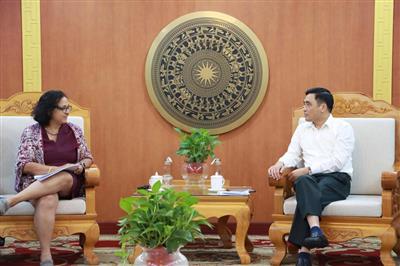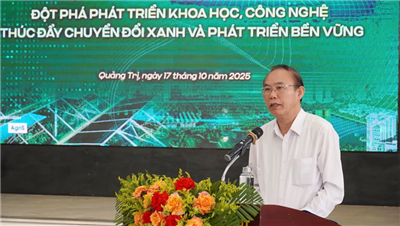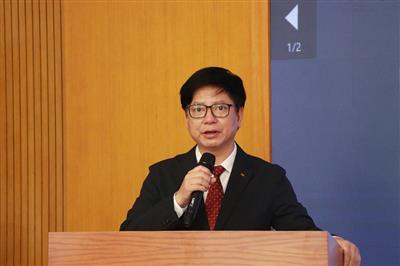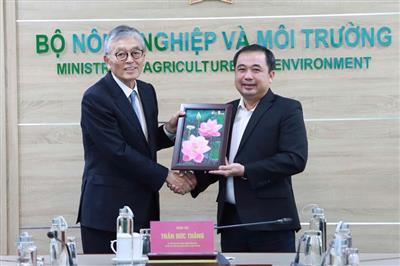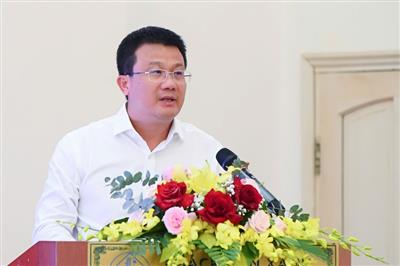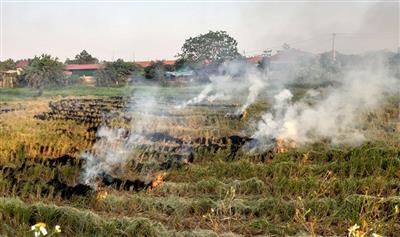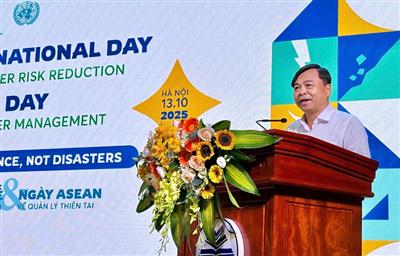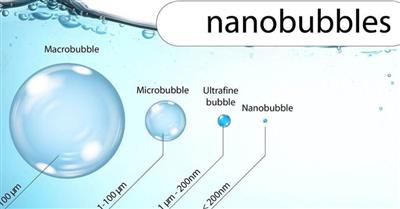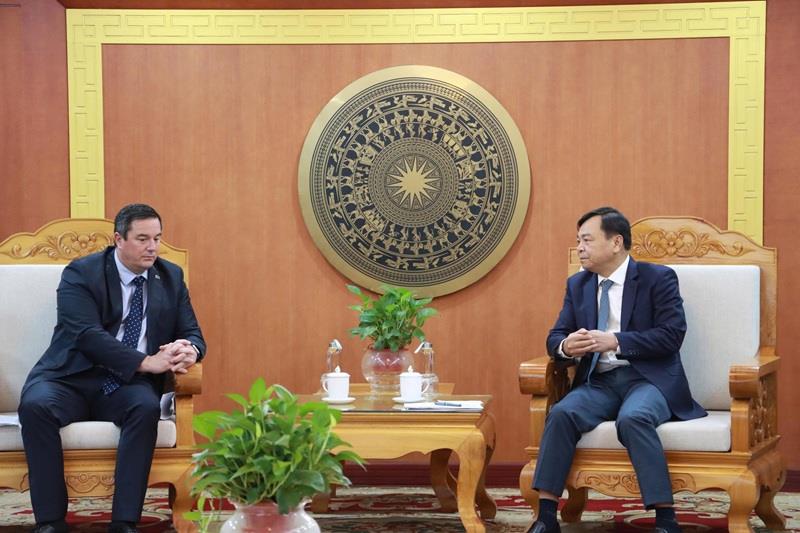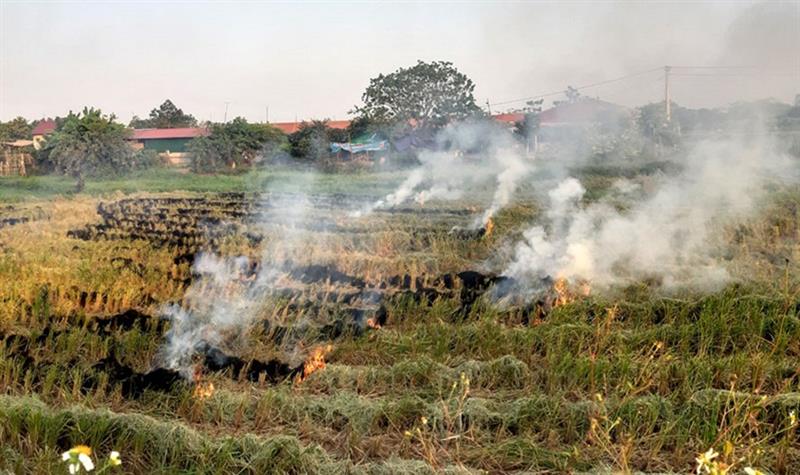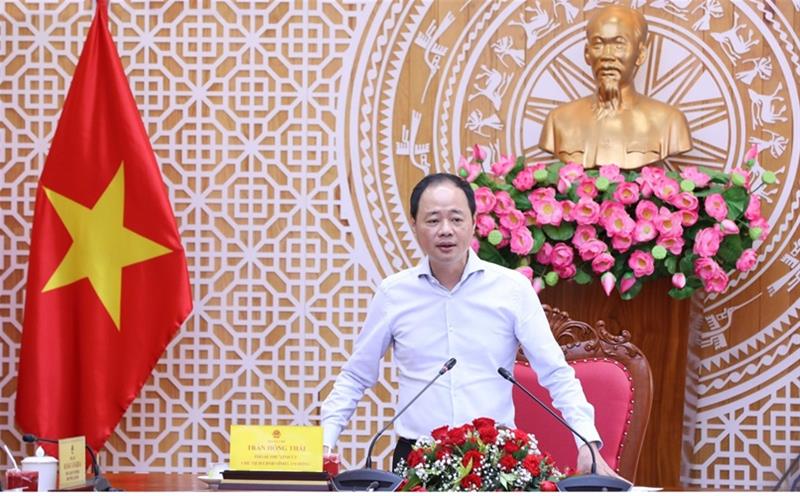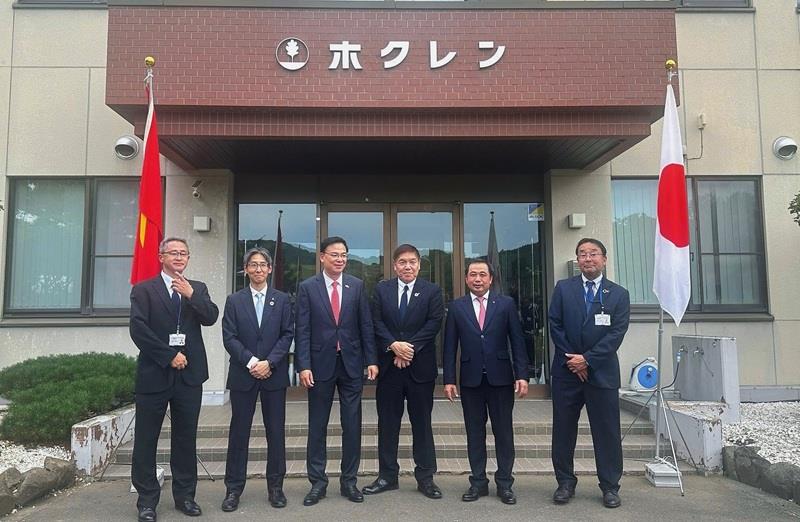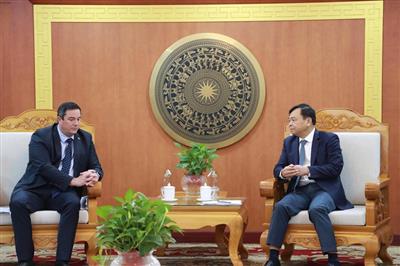
Sustainable cooling: An urgent solution for Vietnamese cities in the era of extreme heat
28/08/2025TN&MTWith initial achievements from sustainable cooling cooperation in several pilot cities, Vietnam now has an important opportunity to mobilize green finance, reduce energy costs, and protect public health against increasingly severe heatwaves. At the meeting on “Reviewing cooperation on climate-friendly, energy-efficient cooling solutions to address extreme heat in urban areas of Vietnam,” held on 28 August by the Department of Climate Change (Ministry of Agriculture and Environment) in collaboration with the United Nations Environment Programme (UNEP) and the Global Green Growth Institute (GGGI), experts, policymakers, and development partners shared a wide range of practical perspectives. The discussions not only identified challenges but also offered policy, financial, and partnership options to help scale up sustainable cooling solutions nationwide.
Sustainable cooling tied to the roadmap for phasing out ozone-depleting substances
Ms. Nguyen Dang Thu Cuc – Deputy head of Greenhouse Gas Emissions Management and Ozone Layer Protection Division, Department of Climate Change, Ministry of Agriculture and Environment
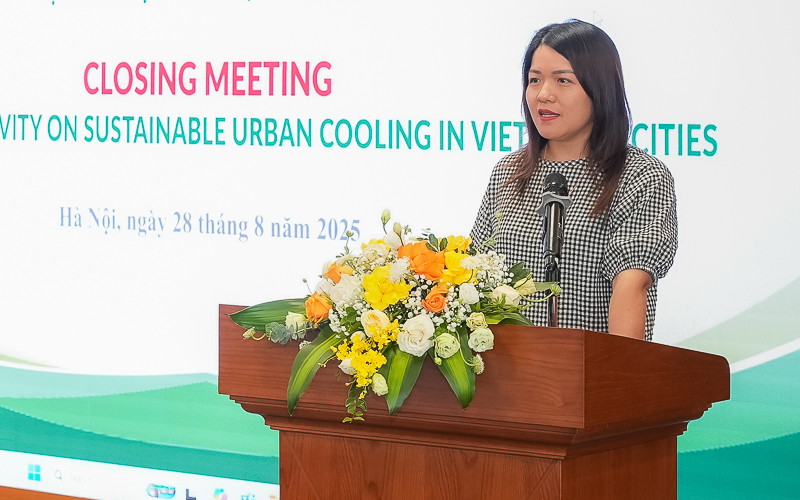
According to data compiled by the Department of Climate Change, Vietnam’s average annual temperature has already increased by about 0.89°C, the number of hot days continues to rise across the country, and urban areas are experiencing strong impacts from the heat island effect. If left unchecked, emissions from cooling demand could double by 2030 and triple by 2100. In this context, I believe
sustainable cooling is not only about protecting public health from extreme heat but also a key measure for Viet Nam to meet its greenhouse gas reduction commitments.
Vietnam has made significant progress: we have joined the Vienna Convention, the Montreal Protocol, ratified the Kigali Amendment, and more recently signed the Global Cooling Pledge at COP28. The target is to reduce 68% of emissions from cooling systems by 2050, making a direct contribution to the Net Zero goal.
Domestically, the legal framework has been continuously updated. The Law on Environmental Protection 2020 introduced the concept of “sustainable cooling” into legislation for the first time, followed by Decree 06/2022/ND-CP, Circular 20/2023/TT-BTNMT, and most recently Decree 119/2025/ND-CP. Particularly, Decision 496/QD-TTg of 11 June 2024 approved the National Plan on the Management and Phase-out of Controlled Substances, setting a target to phase out 11.2 million tons of CO₂e by 2045.
The plan sets very concrete goals. By 2030, 100% of grade-I and grade-II cities must have plans to reduce urban heat islands and respond to extreme heat, with an average green space of at least 9 m² per person. It also aims to reduce refrigerant demand in new urban areas and buildings by 85% through the use of low-carbon technologies and improved energy efficiency.
The phase-out roadmap is equally ambitious: HCFC consumption will be reduced by 67.5% during 2025–2029, 97.5% from 2030–2039, and completely eliminated after 2040. For HFCs, levels will be frozen until 2028 and then gradually reduced, aiming at an 80% cut from 2045 onwards. These figures represent both challenges and opportunities for enterprises to transform technologies and shift the equipment market toward greater sustainability.
To achieve these goals, a combination of measures is required: urban planning with green infrastructure and ventilation corridors; the development of green buildings; promotion of passive cooling solutions such as green roofs and insulation materials; higher energy performance standards for cooling equipment; refrigerant lifecycle management; and especially green financing mechanisms so both enterprises and households can access high-efficiency appliances. Investment in workforce training and technical standards is also essential.
I am confident that with decisive and coordinated implementation, sustainable cooling will help Vietnam adapt effectively to extreme heat, protect public health, and meet its international commitments, moving steadily toward the Net Zero target by 2050.
Implementing the global cooling pledge: From pilot projects to nationwide replication
Mr. Manjeet Singh – Technical Adviser, Cool Coalition, UNEP
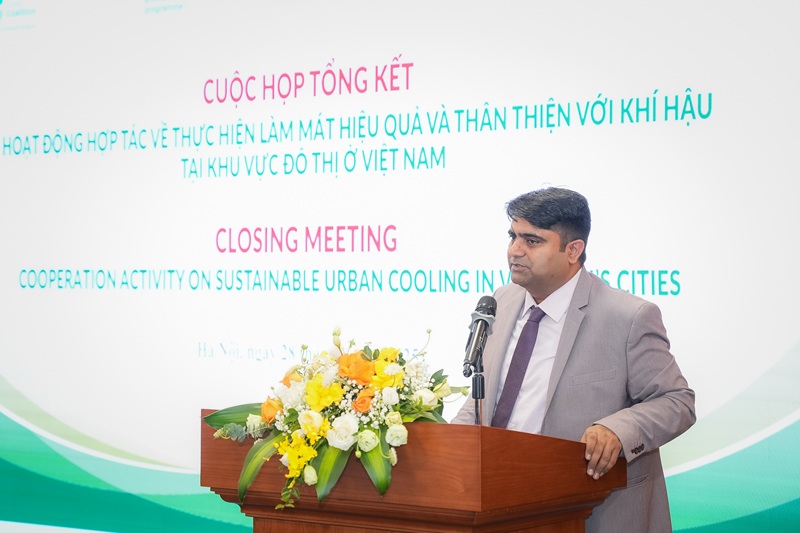
Globally, more than 1 billion people still lack access to safe cooling, while heatwaves have become 67% more frequent since 1979. Without action, cooling-related emissions could account for up to 10% of total global emissions by 2050. In Vietnam, according to estimates in the National Cooling Action Plan (NCAP), cooling emissions could reach 91.7 million tons of CO₂e by 2030, around 10% of national
emissions, and peak at 116 million tons by 2045 without intervention. These figures show that sustainable cooling is both one of the greatest challenges and an opportunity for a greener economy.
The Global Cooling Pledge, launched under the COP28 Presidency and the Cool Coalition, has so far attracted 72 signatories, including Vietnam, one of the first countries to join at COP28. The pledge aims to cut cooling emissions by more than 68% by 2050 while expanding access to sustainable cooling for vulnerable groups. I would highlight three key directions: passive cooling (expanding green space and integrating heat-resilient building codes), phasing down HFCs, and improving the energy efficiency of cooling equipment.
In Vietnam, over the past three years, we have worked with the Department of Climate Change and GGGI to develop Urban Cooling Action Plans (UCAPs) for cities such as Can Tho and Tam Ky, with Dong Hoi participating as a learning city. At that time, Can Tho, Tam Ky and Dong Hoi were still independent province/cities, prior to recent administrative changes in Vietnam. Activities have included urban heat mapping, cooling needs assessments, governance model design, and national and local training workshops. We have identified more than 10 million m² of potential project areas, conducted two prefeasibility studies in Can Tho and Tam Ky, introduced investment opportunities to the private sector. These practical steps provide a basis for Vietnam to replicate the model nationwide.
For successful implementation of the Global Cooling Pledge, we need to focus on four pillars. First, institutional integration, embedding cooling plans into urban planning and legislation. Second, establishing monitoring and reporting systems tied to 2030 and 2050 targets. Third, scaling up financial mobilization through green credit, green bonds, and carbon markets. And finally, policy alignment, connecting local action with national climate and energy strategies.
Experience from pilot projects in Vietnam shows that sustainable cooling not only protects communities from extreme heat but also opens up new economic opportunities through energy-saving and green investment projects. I believe these steps will enable Vietnam to fully deliver on the Global Cooling Pledge while making an important contribution to global climate goals.
Responding to extreme heat in Can Tho and Tam Ky: Results and next steps in urban cooling plans
Mr. Zuolun Chen – Technical Adviser, UNEP Copenhagen Climate Centre

When we began developing UCAPs for Can Tho and Tam Ky, the aim was to provide strategic tools for cities to respond effectively to extreme heat. Data show that by 2050, northern Vietnam could experience up to 45 days of extreme heat annually; in Hanoi, hospital admissions for respiratory diseases once rose by nearly 46% during heatwaves, while outdoor labor productivity could fall by more than 35%. These figures underline the urgency of timely, concrete action.
The UCAPs helped us map urban heat islands, identifying the most affected zones. In Can Tho and Tam Ky, dense built-up areas with limited greenery and water bodies recorded significantly higher temperatures than surrounding regions. We recommended expanding green space in public areas and building sites, adding water surfaces, using reflective materials, and designing landscapes to promote natural ventilation. These measures reduce temperatures, improve thermal comfort, and ease the burden on electricity consumption for air conditioning.
Mr. Ngo Hoang Ngoc Dung – Urban Heat Specialist, UNEP
Our analysis of cooling demand in Can Tho and Tam Ky focused on buildings, where air conditioning accounts for the largest share of electricity use. The results demonstrated clear mitigation potential: in Can Tho, annual reductions of 120,000 tons of CO₂e in the short term, 360,000 tons in the medium term, and 480,000 tons in the long term; in Tam Ky, respective reductions of 20,000, 30,000, and 80,000 tons of CO₂e.
Achieving this requires a package of measures: landscape planning with at least 35% green coverage, combining tall trees, shrubs, and grass; integrating water surfaces to support natural cooling; and improving building design with optimized window ratios and enhanced natural ventilation to ensure airflow of at least 0.5 m/s in main living areas. All these measures have been validated by technical simulations.
For next steps, I believe we should prioritize three areas: leveraging incentives to encourage investment in sustainable cooling solutions; scaling up pilot projects to larger demonstrations; and developing financial mechanisms and business models, such as Cooling-as-a-Service, to ensure sustainability and replicability. With these measures, UCAPs will translate into practice, delivering tangible benefits for residents and serving as models for other cities.
Financial mechanisms – The key to scaling up sustainable cooling projects
Ms. Dao Thi Mai Hoa – Global Green Growth Institute (GGGI)
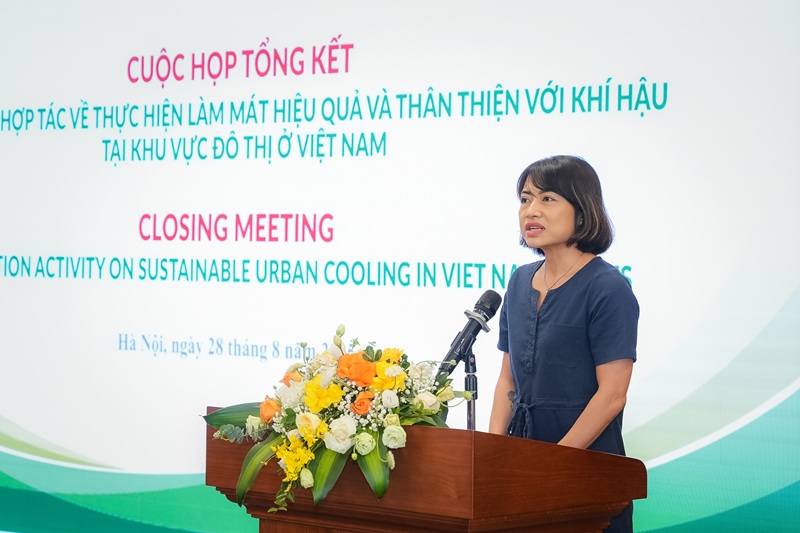
To implement sustainable cooling initiatives effectively in Vietnam’s cities, financial barriers must first be addressed. At present, most projects are small in scale, lack aggregation mechanisms, and thus involve high due diligence and transaction costs. Many developers have limited experience in preparing bankable, large-scale sustainable projects and struggle to secure financing. Early-stage preparation funding is often
missing, while initial costs are high and long-term benefits difficult to quantify.
To implement sustainable cooling initiatives effectively in Vietnam’s cities, financial barriers must first be addressed. At present, most projects are small in scale, lack aggregation mechanisms, and thus involve high due diligence and transaction costs. Many developers have limited experience in preparing bankable, large-scale sustainable projects and struggle to secure financing. Early-stage preparation funding is often missing, while initial costs are high and long-term benefits difficult to quantify.
Another challenge is the absence of clear policy and dedicated financial mechanisms for sustainable cooling. Banks, the main financiers, lack tools and expertise to assess risks and benefits of such projects. Innovative financial products tailored to cooling projects, such as Cooling-as-a-Service, first-loss capital, or credit guarantees, are still underdeveloped.
Various financing options are available, from traditional loans, energy-saving revolving funds, and ESCO models to carbon finance, blended finance, and green bonds. Each has its advantages and limitations, but most require projects to demonstrate economic viability and measurable performance.
This is why prefeasibility studies are critical. They assess technical, economic, and environmental aspects, reduce risks for developers and financiers, and help identify solutions eligible for green credit lines, concessional finance, or carbon markets.
The next step is to strengthen cooperation with commercial banks, development finance institutions, and investors. Only with such partnerships can we move toward detailed feasibility studies and investment structuring, opening the door for broader deployment of sustainable cooling projects.
From the perspectives shared by experts, it is clear that sustainable cooling has moved beyond being a technical concept to become a strategic priority linked to public health, green growth, and the Net Zero target. The common message is that Vietnam must expand its policy framework, raise technical standards, mobilize green finance, and strengthen international cooperation to scale up effective cooling models.
Early results from pilot projects in Can Tho, Da Nang, and Quang Tri confirm feasibility, but scaling nationwide will require stronger commitment from policymakers, businesses, financial institutions, and development partners. Public, private partnerships, coupled with innovative financing mechanisms, will be key to making sustainable cooling a mainstream approach, helping Vietnam not only cope with extreme heat but also seize socio-economic opportunities in the green transition.
Ngoc Huyen


